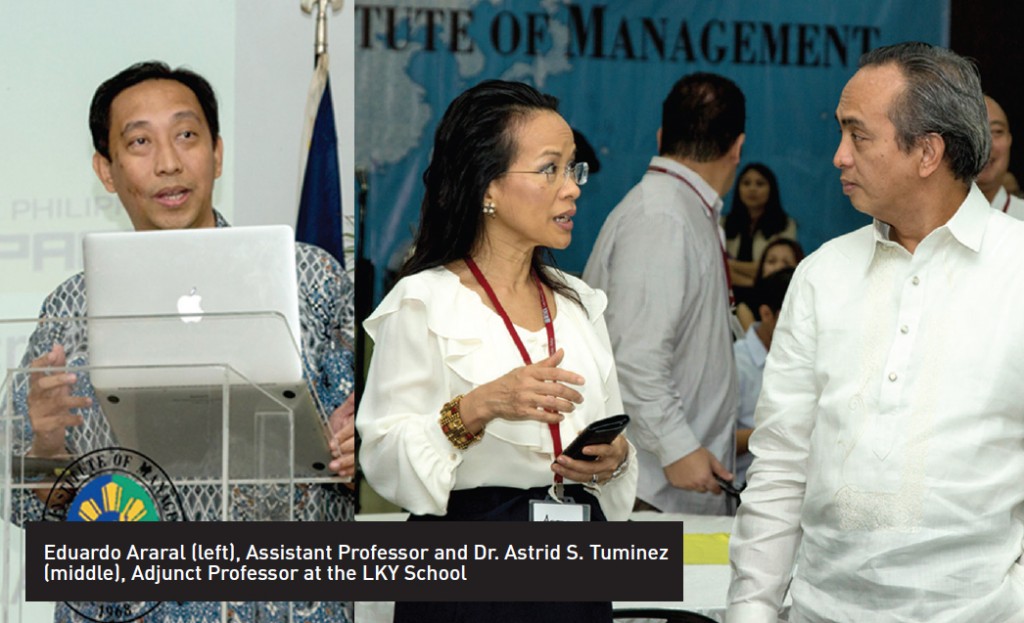
Eduardo Araral (L), Vice Dean (Research) and Associate Professor, and Dr Mary Astrid S. Tuminez (Centre), Adjunct Professor, at the LKY School. Image: LKYSPP
How could TV White Space (TVWS) technologies be harnessed to enhance connectivity in the Philippines? The LKYSPP and the Asian Institute of Management (AIM) Policy Center conducted a public forum on 9 June 2014 to discuss the potential benefits of TVWS technologies, as well as needed policy changes to enable its widespread deployment.
Dubbed “Enhancing Connectivity and Economic Development in the Philippines: Opportunities from TV White Spaces”, Microsoft, the main sponsor for this event, also supports LKYSPP’s research project on secondary cities’ competitiveness in ASEAN.
TV white spaces are unused television channels which can be accessed by other devices for a variety of communicationapplications. Internet connections in the Philipines, especially from outside the capital of Metro Manila are characterised by slow speed and high subscription costs. With one of the lowest levels of broadband connectivity in Southeast Asia, TVWS technologies offers the promise of reducing the digital divide and improving communication in remote areas. This offers improvements in access to information, disaster relief management, environmental preservation, and transparency and accountability in governance systems.
In a 2003 trial in Bohol, Philippines, TVWS technologies were used forfisherfolk registration and biodiversity preservation. Fisherfolk can access the Bureau of Fisheries and Aquatic Resources’ (BFAR) Fisherfolk Registration System (FRS) to allow municipalities immediately distribute critical IDs, certificates, and fishing licenses to fisherfolks in thecommunity. This ensures that only licensed fishermen can conduct fishing activities in the aquatic areas, avoiding illegal fishing activities which tend to be destructive to the vast decreasing marine resources. Fast and accessible information from these technologies have contributed to the relief and rehabilitation efforts following the devastation brought about by the Bohol Earthquake and Typhoon Haiyan in the Visayas Region in 2013.
The pilot project was led by the Philippine government in collaboration with Microsoft and the US Agency for International Development. However, wider implementation is challenged by outdated Philippine spectrum and ICT-related regulations.
Representatives from the media, industry, academe and civil society groups also participated in the policy forum. Commissioner Gamaliel Cordoba of the Philippines’ National Telecommunications Commission, Executive Director Louis Casambre of the Information and Communications Technology Office and Mr. Jeffrey Yan, Microsoft’s Director of Technology Policy (Asia Pacific) provided key speeches and presentations.
A diverse panel of discussants from these sectors also shared their experiences based on the pilot projects in TV White Spaces in the Philippines. Undersecretary Lesley Cordero, the Philippine’s Presidential Assistant for Rehabilitation and Recovery, highlighted TVWS and similar technologies would allow for a more efficient and effective rehabilitation of affected communities, and thereby improving quality delivery of government services, especially as the Philipines faces various natural catastrophes.
McRhon S. Banderlipe I is Senior Executive at Executive Education. His email is sppbmris@nus.edu.sg. To read more about Executive Education programs by the LKY School, please visit our website.